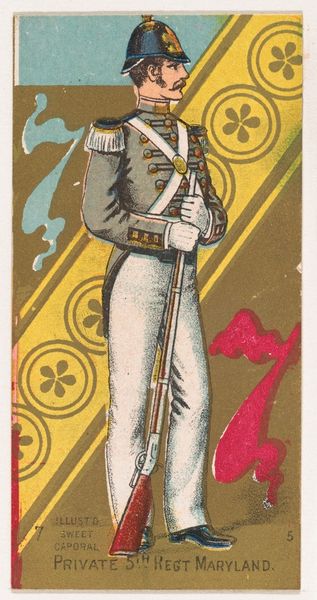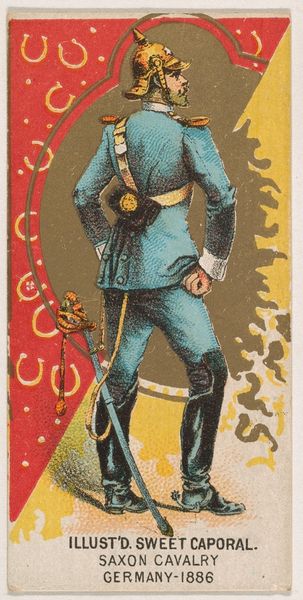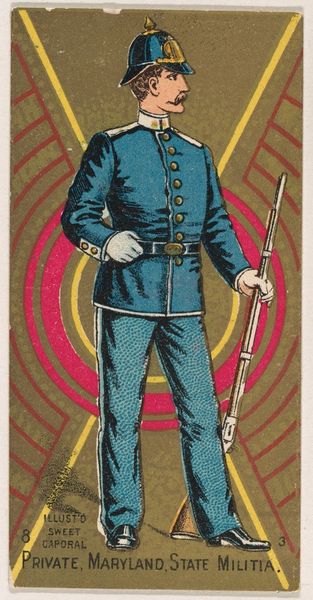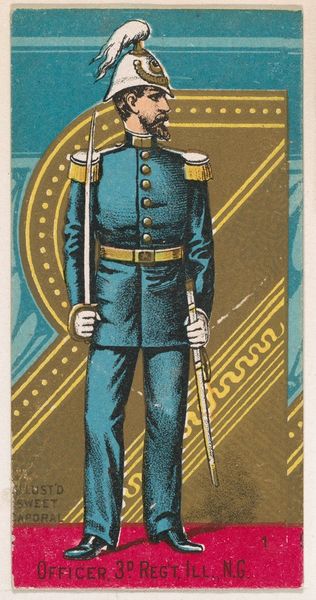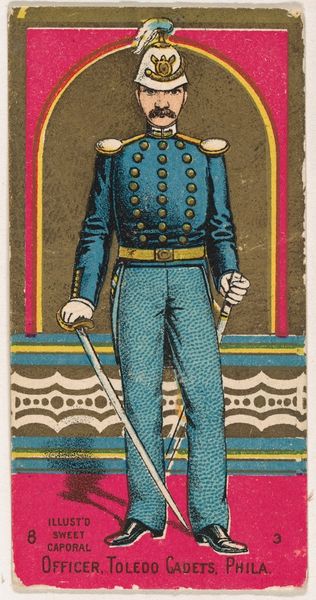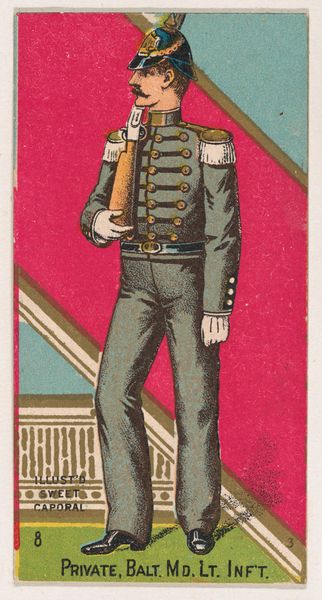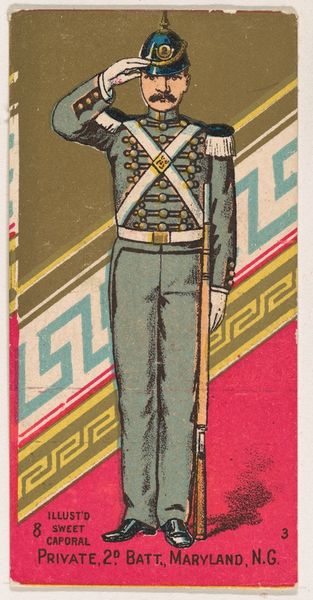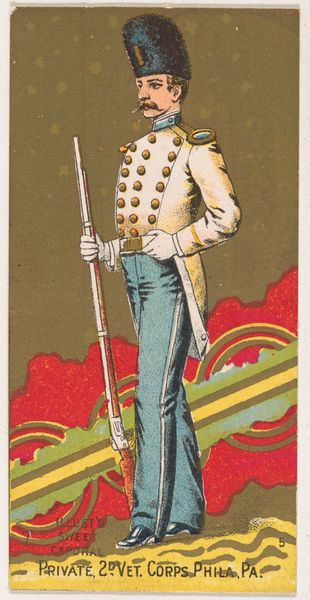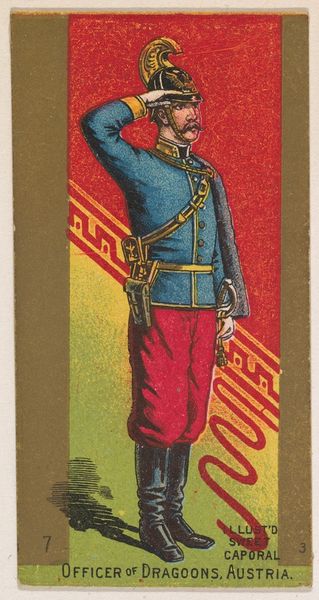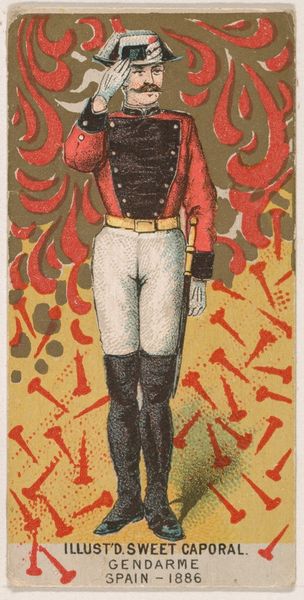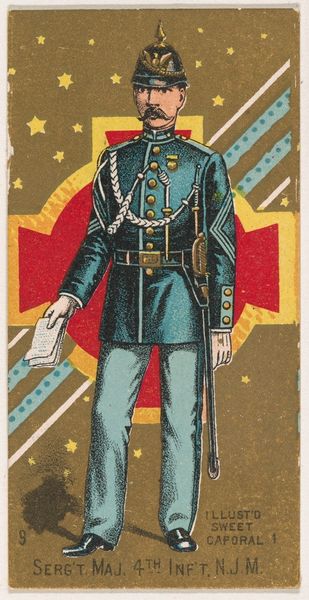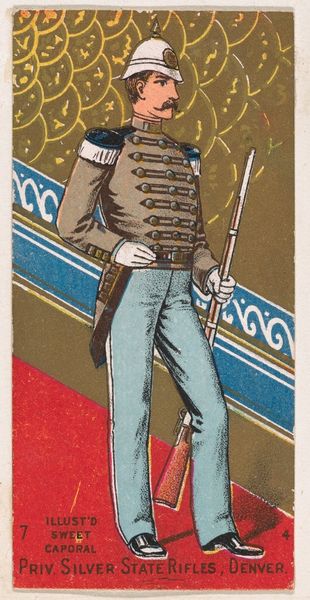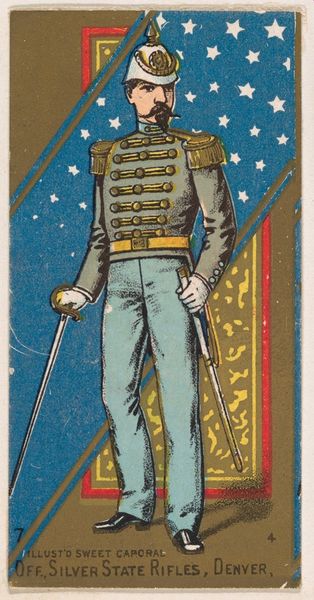
Private, Oakland Rifles, Chicago, from the Military Series (N224) issued by Kinney Tobacco Company to promote Sweet Caporal Cigarettes 1888
0:00
0:00
Dimensions: Sheet: 2 3/4 × 1 1/2 in. (7 × 3.8 cm)
Copyright: Public Domain
Editor: Here we have "Private, Oakland Rifles, Chicago" from 1888, a print made by Kinney Brothers Tobacco Company as part of a series to promote Sweet Caporal Cigarettes. The graphic style is fascinating, it almost feels like a cross between Ukiyo-e and… Victorian advertising? What do you see in it? Curator: It's interesting that you pick up on the Ukiyo-e influence! This work certainly utilizes flattening and patterning reminiscent of Japanese prints, while simultaneously presenting a distinctly American figure—the soldier, poised for action. What do the geometric shapes in the background communicate to you? Editor: They’re a bit jarring, aren't they? It almost feels as if they're conflicting with the realism they are going for, for his image as a rifleman. It makes the entire scene feel...flat and decorative, rather than something related to conflict. Curator: Precisely. This tension speaks to a broader cultural memory. The commercial aspect—this being a tobacco advertisement—attempts to domesticate the military image, integrating it into everyday life, almost… play? Note also the belt buckle detail of "O.R.", for Oakland Rifles; consider the effect on viewers, as they might seek a psychological connection through membership, camaraderie and cultural status. Editor: So, you're suggesting the print normalizes and almost glamorizes the military figure through the act of consumption, a cultural memory created via advertising? Curator: Exactly! Consider how the symbols associated with military service are deliberately placed into circulation to cultivate an emotional connection with consumers, and what narratives those visual symbols perpetuate, subtly or not. The iconographic packaging aims to sell not just tobacco, but also idealized, nationalistic associations. It serves as a symbolic marker of participation in a shared identity, would you agree? Editor: I do. It is incredible to consider how commercial imagery reflects the cultural values, hopes, and even anxieties of its time, now immortalized in print. Thank you. Curator: The pleasure was all mine.
Comments
No comments
Be the first to comment and join the conversation on the ultimate creative platform.
